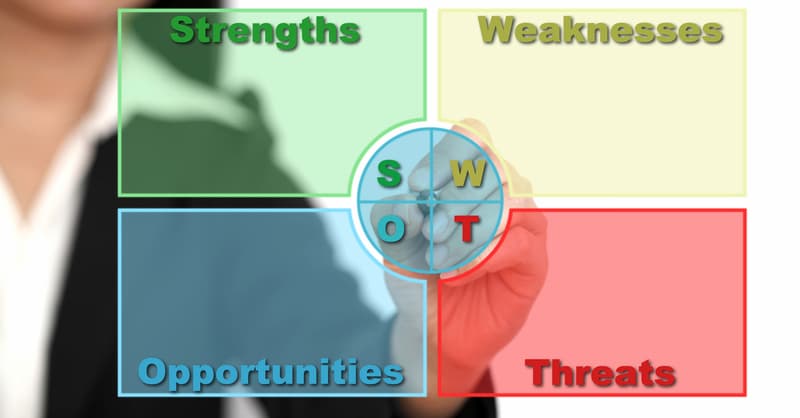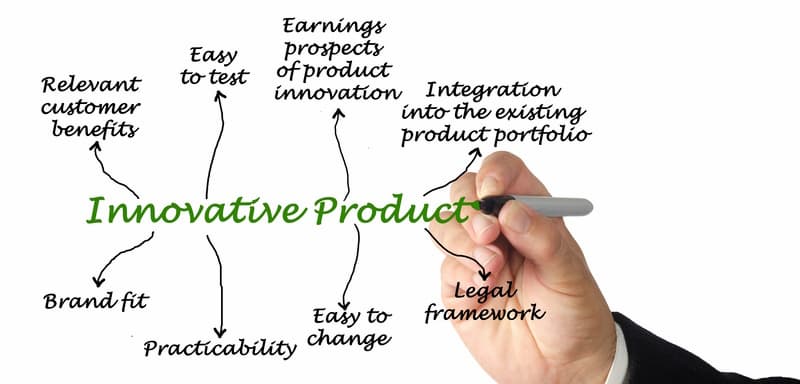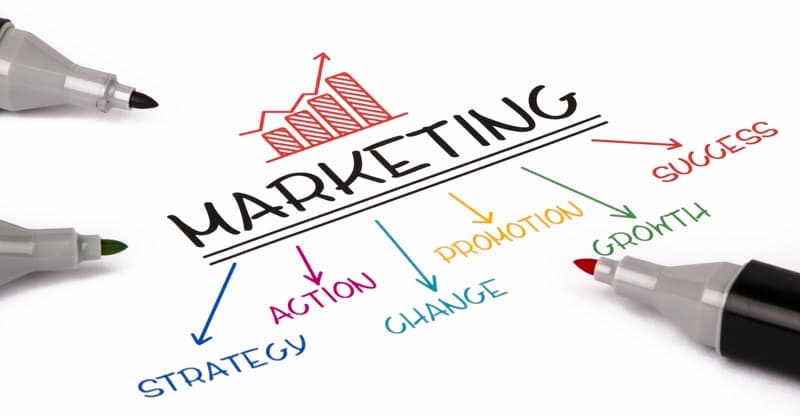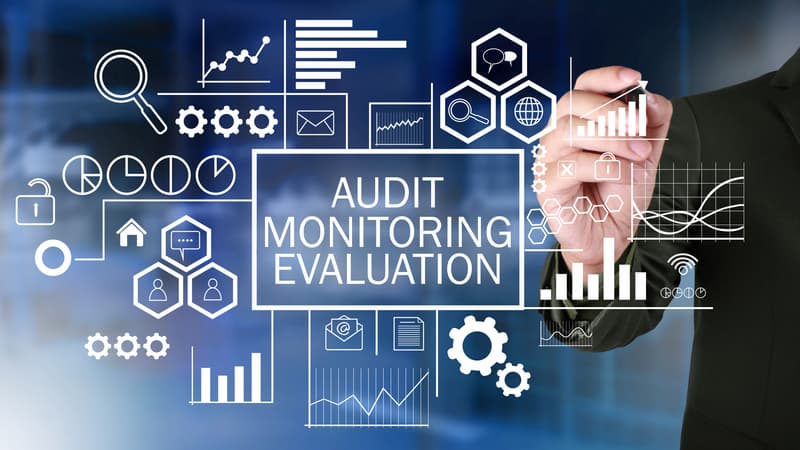
How to Make a Business Plan For Promotional Products In 2024
Crafting a forward-thinking business plan is crucial for the success of any venture. As we venture into 2024, the promotional products industry continues to be a powerful tool in fostering brand identity and customer loyalty. Below are some tips on devising a comprehensive business plan that seizes opportunities and addresses potential challenges for the year ahead.
1) Understanding Market Trends

Before we move into the finer details of creating a business plan, it’s pertinent to grasp the prevailing market trends. Conducting a market analysis will help you identify your target audience's preferences and buying habits. Some of the most pertinent considerations are listed below.
Sustainability and Eco-Friendliness
- Green Products: There's a growing trend towards eco-friendly promotional products that are made from sustainable or recycled materials. Offering green products can help you attract environmentally conscious clients.
- Carbon Offset Initiatives: Companies want to reduce their carbon footprint; consider introducing carbon offset initiatives as part of your business model to meet this demand.
Technological Innovations
- Smart Promotional Products: Integrating technology into promotional products, such as USB drives or products with built-in wireless charging capabilities, is a rising trend. Stay ahead by offering products with smart functionalities.
- AR and VR Experiences: Augmented Reality (AR) and Virtual Reality (VR) are emerging trends. Consider offering items integrating AR and VR technologies to provide interactive experiences.
Personalisation and Customisation
- Custom Designs: Offering custom designs that allow clients to have items that are uniquely theirs is a growing trend.
- Personalised Packaging: Going beyond the product itself, personalised packaging can add a special touch and is an emerging trend in the promotional products industry.
Remote Working and Home Office Products
- Home Office Supplies: With the rise of remote working, there is an increased demand for home office supplies. Consider products that cater to the home office market.
- Wellness Products: Remote workers, such as ergonomic furniture and wellness kits, also focus on wellness.
Health and Safety Products
- Sanitisation Products: In light of the ongoing pandemic, health and safety products such as hand sanitisers and face masks have become staple promotional items.
- Mental Health Kits: Mental health is becoming a focus area; consider offering mental health kits that include products to reduce stress and enhance well-being.
Online Sales and E-commerce
- Seamless Online Shopping Experience: E-commerce is dominating the retail landscape. Ensuring a seamless online shopping experience with user-friendly website interfaces and secure payment gateways is essential.
- Virtual Showrooms: Offer virtual showrooms to showcase your promotional products in a 3D environment, providing customers with an immersive online shopping experience.
Understanding the market trends thoroughly is vital in crafting a business plan for 2024. It will help you align your business with consumers' current demands and preferences, thereby setting a strong foundation for a successful year ahead. Stay tuned to changes and evolutions in the market to keep your business plan adaptable and relevant.
2) SWOT Analysis

Conducting a SWOT (Strengths, Weaknesses, Opportunities, and Threats) analysis is a pivotal step in creating a business plan. It aids in comprehending the internal and external factors that can affect your business. Here’s how you can focus on each aspect:
Strengths
- Existing Client Base: Evaluate the strength of your existing client relationships and the reputation your business holds in the market.
- Unique Products: Consider the exclusivity of your products and how they give you a competitive edge.
- Operational Efficiency: Analyse your business’s operational strengths, such as a robust supply chain, efficient production processes, and high-quality customer service.
Weaknesses
- Resource Constraints: Identify any resource constraints that might be limiting your business’s growth.
- Limited Online Presence: A limited online presence can be a significant setback in the digital age. Analyse your current online presence and identify areas of improvement.
- Dependence on Few Suppliers: Relying heavily on a few suppliers can be a vulnerability; explore how to diversify your supplier base to mitigate this weakness.
Opportunities
- Emerging Markets: Identify emerging markets and consumer trends that present new opportunities for your business.
- Collaborations and Partnerships: Explore opportunities for collaborations and partnerships to expand your product offerings or reach a wider audience.
- Government Grants and Incentives: Keep an eye out for government grants and incentives your business can avail of to foster growth.
Threats
- Competitive Landscape: Understand the competitive landscape in your industry, identifying the main competitors and their strengths.
- Regulatory Changes: Be aware of any forthcoming regulatory changes affecting your business operations.
- Economic Fluctuations: Economic fluctuations can impact the buying behaviour of your clients; identifying such threats will allow you to prepare contingency plans.
Remember, a thorough SWOT analysis will help identify the areas where your business excels and pinpoint the opportunities that can be seized and the threats that need to be managed or mitigated. This process is a crucial foundational step in creating a robust business plan for 2024, allowing for a strategy that is both proactive and informed.
3) Defining Objectives and Goals

Setting clear objectives and goals is a fundamental step for companies looking to purchase promotional products in 2024. It helps in steering the direction of the promotional strategy effectively.
Brand Awareness
- Consistency in Brand Message: Ensure they convey a consistent brand message, reinforcing the company's identity.
- Reaching New Audiences: Define goals to reach new demographics and expand the customer base.
Engagement
- Interactive Products: Consider objectives around procuring products that encourage interaction, thereby increasing engagement with the brand.
- Customer Feedback: Set goals to garner customer feedback, including QR codes that lead to feedback forms.
Sales and Lead Generation
- Conversion Rates: Establish clear objectives regarding the conversion rates expected from the promotional campaign.
- Customer Retention: Formulate goals aiming at customer retention through value-added products.
Sustainability
- Eco-friendly Products: With an increased focus on sustainability, set objectives to procure eco-friendly promotional products, aligning with the company's green initiatives.
- Ethical Sourcing: Companies might also aim to ensure they are ethically sourced, reflecting the company’s commitment to responsible business practices.
Budget
- Cost-Effectiveness: Define objectives centred around the budget, focusing on procuring cost-effective and high-quality items.
- ROI Measurement: Set goals to measure the ROI (Return on Investment) to understand the campaign's effectiveness.
Customisation
Personalised Products: Consider objectives surrounding the customisation of products to offer a more personal touch.
- Innovative Branding: Focus on innovative branding solutions through custom designs and branding.
4) Product Portfolio

Developing a robust product portfolio is essential for companies. It is a decisive step that entails assembling a range of products that meet the market demands and resonate with the brand values and objectives. Below are key focal points to consider:
Sustainability
- Eco-friendly Materials: Prioritise products made from sustainable, recycled, or upcycled materials to meet the rising demand for eco-friendly products.
- Durability: Opt for durable and long-lasting products.
Customisation
Personalised Messaging: Focus on products that allow for customisation, offering space for branding, personalized messages, or company logos to create a deeper connection with the audience.
- Unique Designs: Explore unique and innovative designs to stand out in the market and create a memorable impression.
Technological Integration
- Tech-savvy Products: Considering technological advancements, consider incorporating tech-savvy products in your portfolio to cater to a digitally inclined audience.
- Functional Products: Look for products that serve a functional purpose, amalgamating technology with everyday use to offer value to the recipients.
Demographic Catering
- Versatility: Focus on a versatile product range that caters to various demographics, considering different age groups, professions, and preferences.
- Inclusivity: Ensure to include products that are inclusive and cater to a diverse audience, promoting a message of unity and acceptance through your portfolio.
Quality Assurance
- Premium Products: Even while accommodating diverse products, maintain a quality standard to ensure a positive brand representation.
- Reliability: Build a portfolio of reliable products that users can trust, enhancing the brand's credibility.
Budget-friendly Options
- Value for Money: While building a diverse portfolio, ensure to include budget-friendly options that offer value for money to suit different budget constraints.
- Bulk Purchases: Consider options that facilitate bulk purchases without compromising on quality, offering cost-effective solutions for large-scale promotional campaigns.
5) Marketing Strategy

Incorporating a robust marketing strategy into your business plan remains paramount. This entails crafting a meticulous approach that showcases your brand effectively through the promotional merchandise procured. Below shows how businesses can optimise their marketing strategy:
Digital and Traditional Marketing Avenues
- Hybrid Approach: A hybrid approach leveraging both digital and traditional avenues will help reach a broader audience spectrum. While digital platforms can provide analytics and targeted reach, traditional mediums, such as print and television, can offer a substantial local reach.
- SEO and SEM: If leaning heavily towards digital marketing, ensure strategies like SEO and SEM are implemented to increase visibility and drive traffic to the company’s website.
Engaging Content
- Storytelling: Engaging storytelling that narrates the brand's journey can resonate well with the audience, creating a connection and fostering loyalty.
- Interactive Content: Develop interactive content involving quizzes, webinars, or podcasts to keep the audience engaged and foster a community around the brand.
Highlighting the Unique Selling Proposition (USP)
- Quality and Uniqueness: Make it a point to highlight the quality and uniqueness of the products through different content formats such as blog posts, videos, and infographics.
- Testimonials and Reviews: Encourage satisfied customers to leave reviews and testimonials, illustrating the effectiveness and appeal of the promotional items in real-world scenarios.
Personalisation and Customisation
- Personal Touch: Offer ones with a personal touch, showcasing the effort put in to resonate with the target audience, enhancing the brand image.
- Branding Workshops: Engage in workshops and brainstorming sessions to develop innovative ideas that can stand out in the market.
Feedback and Continuous Improvement
- Feedback Loops: Establish feedback loops with the existing customer base to understand their preferences and continually enhance the product portfolio.
- Market Research: Regular market research should be a staple to stay attuned to the evolving preferences and trends, helping to refine the marketing strategy accordingly.
Collaborations and Partnerships
- Influencer Marketing: Consider partnerships with influencers to reach a wider audience and give an authentic voice to the brand.
- Corporate Collaborations: Forge collaborations with other corporates to create co-branded promotional products that offer a win-win situation, expanding the reach and adding value to the customers.
6) Supply Chain and Logistics

A well-articulated business plan grounded in a robust supply chain and logistics strategy will be critical. Here, we delve into the various focal points that companies should hone in on to secure a seamless and efficient procurement of promotional products, even amid potential disruptions:
Vendor Assessment
- Researching Suppliers: Companies should conduct extensive research to identify suppliers with a proven track record of reliability and delivering high-quality products.
- Multiple Suppliers: It's prudent to engage multiple suppliers to mitigate the risks associated with depending on a single vendor, thereby ensuring continuity in the supply of products.
Inventory Insight
- Anticipating Needs: Adopt forecasting tools to anticipate the demand accurately, aiding in informed procurement decisions to prevent overstocking or understocking situations.
- Responsive Procurement: Consider a responsive procurement strategy that aligns with just-in-time inventory principles to reduce holding costs.
Transport and Delivery
- Reliable Logistics Partners: Seek partnerships with reputable logistics entities to facilitate timely delivery.
- Alternative Transport Plans: Having alternative delivery plans in place will assure uninterrupted supply, averting delays due to unforeseen disruptions.
Storage Solutions
- Strategic Storage Facilities: Opt for vendors who have strategically located warehouses to ensure quick deliveries.
- Modern Warehousing: Give preference to suppliers who leverage modern technology in their warehousing operations, guaranteeing efficiency and safety of products.
Customisation Services
- Quality Assurance: If customisation is a requirement, focus on suppliers who offer in-house customisation facilities to maintain quality standards.
- Swift Custom Orders: Prioritise vendors capable of delivering on custom orders promptly, meeting your brand’s requirements efficiently.
Contingency Planning
Emergency Protocols: Establish emergency protocols with suppliers to ensure a fluid supply chain in case of disruptions.
- Periodic Review: Engage in periodic reviews of the supply strategy to facilitate improvements and adapt to changing market dynamics.
Sustainability Considerations
- Green Packaging: Choose suppliers who use eco-friendly packaging solutions, helping to uplift your brand's sustainability profile.
- Reduced Carbon Footprint: Opt for suppliers actively working to reduce their carbon footprint, aligning with green initiatives for a better tomorrow.
7) Financial Planning

Financial planning remains a cornerstone for companies. As they gear towards making acquisitions, it is vital to have a well-laid financial blueprint that will steer them to profitability while making the most of their promotional endeavours. Here’s how businesses can approach financial planning:
Budget Allocation
- Department-wise Allocation: Delineate clear budgetary allocations for different departments involved in the procurement process, such as marketing, procurement, and logistics, ensuring smooth operations without financial strain.
- Contingency Fund: Set aside a contingency fund to cater to unforeseen expenditures, helping maintain budgetary balance without compromising other operational areas.
Forecasting
Market Dynamics: Engage in a rigorous analysis of market dynamics to forecast the potential costs of promotional products, factoring in inflation and market demands.
- Demand Forecasting: Undertake demand forecasting to understand the quantity needed to procure, helping to leverage bulk purchase discounts and avoid overstocking.
Financial Analysis
- Cost-Benefit Analysis: Perform a cost-benefit analysis to discern the financial viability, clearly showing the expected ROI.
- Vendor Analysis: A meticulous vendor analysis can aid in choosing the most economically viable suppliers, ensuring quality products within a reasonable budget frame.
Anticipating Financial Hurdles
- Scenario Planning: Engage in scenario planning to anticipate potential financial hurdles that might arise, forming strategies to mitigate them effectively.
- Market Volatility: Keep an eye on market volatility and geopolitical scenarios, which might influence the pricing and plan finances accordingly.
Sustainable Purchasing
- Green Financing: Consider opportunities for green financing if the plan is to invest in sustainable promotional products, possibly availing incentives or grants for eco-friendly initiatives.
- Life Cycle Costing: Embrace life cycle costing to understand the total cost of ownership, including their end-of-life disposal, encouraging sustainable purchasing decisions.
Compliance and Regulations
Regulatory Compliance: Ensure adherence to regulatory compliances, setting aside a budget to meet any standards governing production and distribution, and averting financial repercussions.
Monitoring and Reporting
Financial Dashboard: Establish a financial dashboard to closely monitor budgetary adherence and financial performance, aiding in timely corrective actions.
- Periodic Reports: Encourage the development of periodic financial reports to maintain transparency and keep all stakeholders informed about the financial health related to promotional product procurement.
8) Monitoring and Evaluation

A sound system for monitoring and evaluation is indispensable. It will not only facilitate keeping tabs on the process but also assist in adjusting the strategies in real-time, ensuring the objectives are met proficiently. Here is an elaborate perspective on how to forge a monitoring and evaluation framework:
Developing a Framework
- Defining Objectives: Clearly define the company's objectives, be it enhancing brand visibility or fostering business relations.
- Setting Benchmarks: Establish benchmarks against which the success of the procurement can be gauged based on industry standards or past performances.
Predefined Metrics
- Quantitative Metrics: Set quantitative metrics such as the number of products to be procured, expected reach, and budgetary adherence to facilitate precise tracking.
- Qualitative Metrics: Develop qualitative metrics focusing on perceived value, satisfaction levels, and brand image enhancement.
Key Performance Indicators (KPIs)
- Supplier KPIs: Consider KPIs focusing on supplier performance, such as adherence to delivery timelines and product quality, to ensure a smooth procurement process.
- Impact KPIs: Identify KPIs that gauge the impact on the target audience, including feedback and engagement levels.
Technological Tools
- Analytics Tools: Use analytics tools to dig deep into the data and provide insights into the strategy's performance.
- Feedback Platforms: Leverage feedback platforms to gather responses from the target audience, understanding the hits and misses in the strategy.
Periodic Review
- Regular Updates: Conduct regular updates and reviews to assess the ongoing performance, adjusting strategies based on real-time insights.
- Stakeholder Meetings: Organise stakeholder meetings to discuss the progress and gather diverse inputs, fostering collaborative decision-making.
Adjustment and Optimisation
- Real-time Adjustments: Be prepared to make real-time adjustments based on the monitoring outputs, optimising the strategy for better outcomes.
- Learning and Improvement: Encourage a culture of learning and continuous improvement, taking lessons from the evaluations to better future strategies.
Documentation and Reporting
- Detailed Reports: Generate detailed reports documenting all the phases of procurement and the results achieved, creating a knowledge base for future reference.
- Case Studies: Develop case studies portraying successful strategies and learnings, which can be a guiding light for future purchases.
Conclusion
In crafting a business plan for 2024, incorporating foresight and flexibility is key. Your business can strive towards a successful and profitable year by keeping abreast with market trends and focusing on customer satisfaction.
Remember to revisit and revise your business plan periodically to align with the changing market dynamics and consumer preferences. Here's to a prosperous 2024, with a business plan that's set to navigate the evolving landscape!

